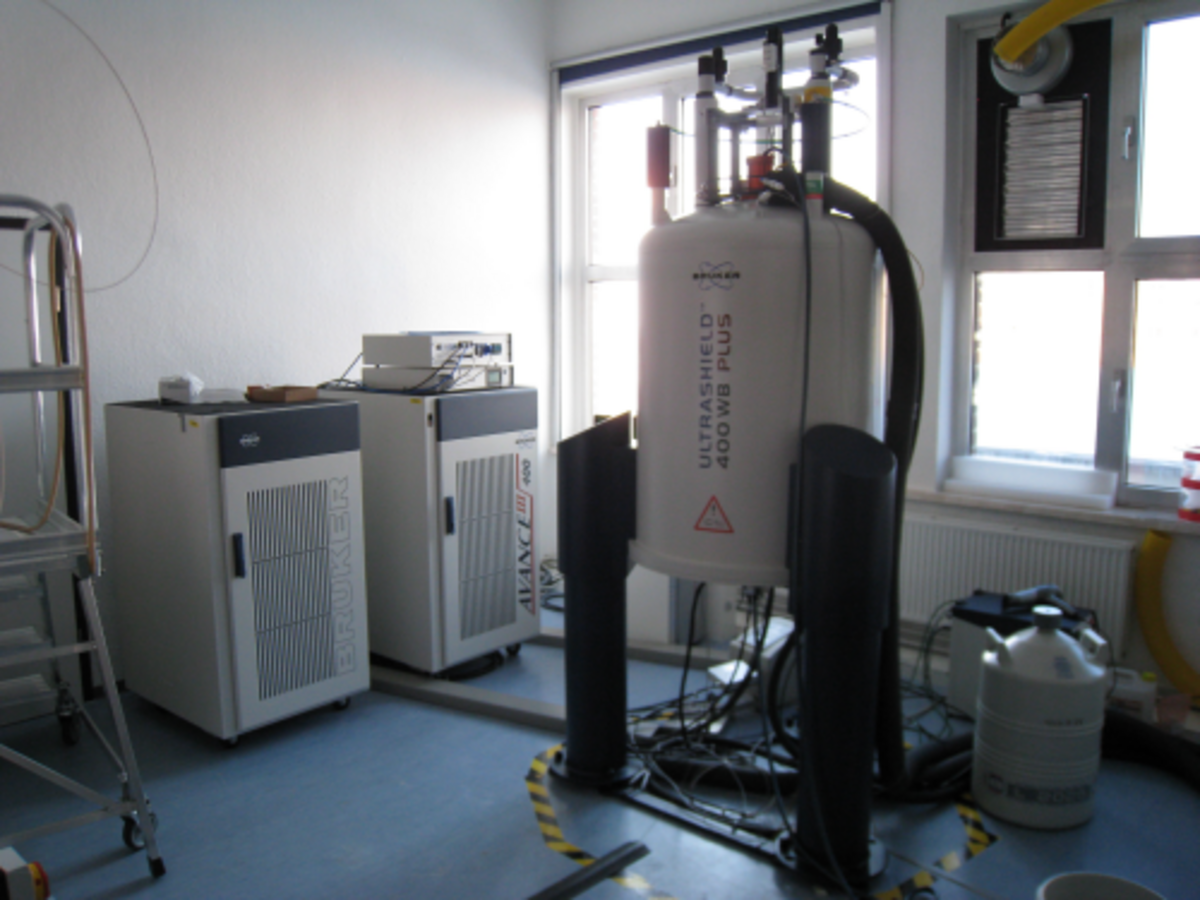Nuclear Magnetic Resonance (NMR) probes the electronic surrounding of nuclei in a chemical compound. It provides information on structure and bonding of atoms in molecules. The phenomenon of magnetic resonance is due to the interaction of an external magnetic field with the magnetic moment associated with the intrinsic spin of a nucleus.
Applying magnetic field gradients along different spatial directions allows for the reconstruction of a tomographic image of the sample object. The spatial resolution of the method can be as low as a few tens of micrometers for suitable samples. Typical durations for the measurement of a tomographic image are on the order of minutes, but can also be hours or days for complex or high-resolution imaging protocols.
NMR is best suited for the investigation of soft matter, i.e. chemical compounds in the liquid or viscous state. Magic Angle Spinning (MAS) allows for the spectroscopic investigation of finely powdered solid state materials, but has a lower spectral resolution than liquid state spectroscopy. Gas phases can only be measured at high partial pressures or in a hyperpolarized state.
Equipment
NMR spectrometer Avance III 400 WB US Plus from Bruker BioSpin
* 9.4 T (400 MHz) magnet with 8.9 mm wide-bore
* 2 channels: 1H and X
* temperature-controlled 10 mm probe for liquids spectroscopy (1H, 109Ag-31P)
* 4 and 7 mm MAS probes for solids spectroscopy (1H, 15N-31P); the 7 mm probe is temperature-controlled
* micro imaging probe with 25 mm resonator inserts for 1H and 13C and 15 mm resonator inserts for temperature-controlled imaging of 1H and 13C
* custom built 30 mm micro imaging probe for 1H and 13C with 25 mm bore for feed-through of supply hoses to the bottom end of the sample
* N2-Dewar cooling unit for measurements down to -100 °C
* NMR compatible 20-mL pressure cell made of sapphire glass for pressures up to 150 bar and temperatures of 0-20 °C
Applications
* Gas hydrates: Determination of the composition and structure of gas hydrates via CP-MAS as well as the study of hydrate formation and dissociation kinetics within a high-pressure flow-through cell. This pressure cell is made of a sapphire single-crystal and holds a sample volume of ~20 mL that may include a porous sediment matrix. Fluids and gases are pumped through the cell with the high-pressure flow-through system NESSI.
* The solid state spectroscopy equipment is set up for the isotopes 1H, 7Li, 11B, 13C, 15N, 17O, 23Na, 27Al, 29Si, 31P, 55Mn, 79Br, 81Br,
127I, 207Pb.







